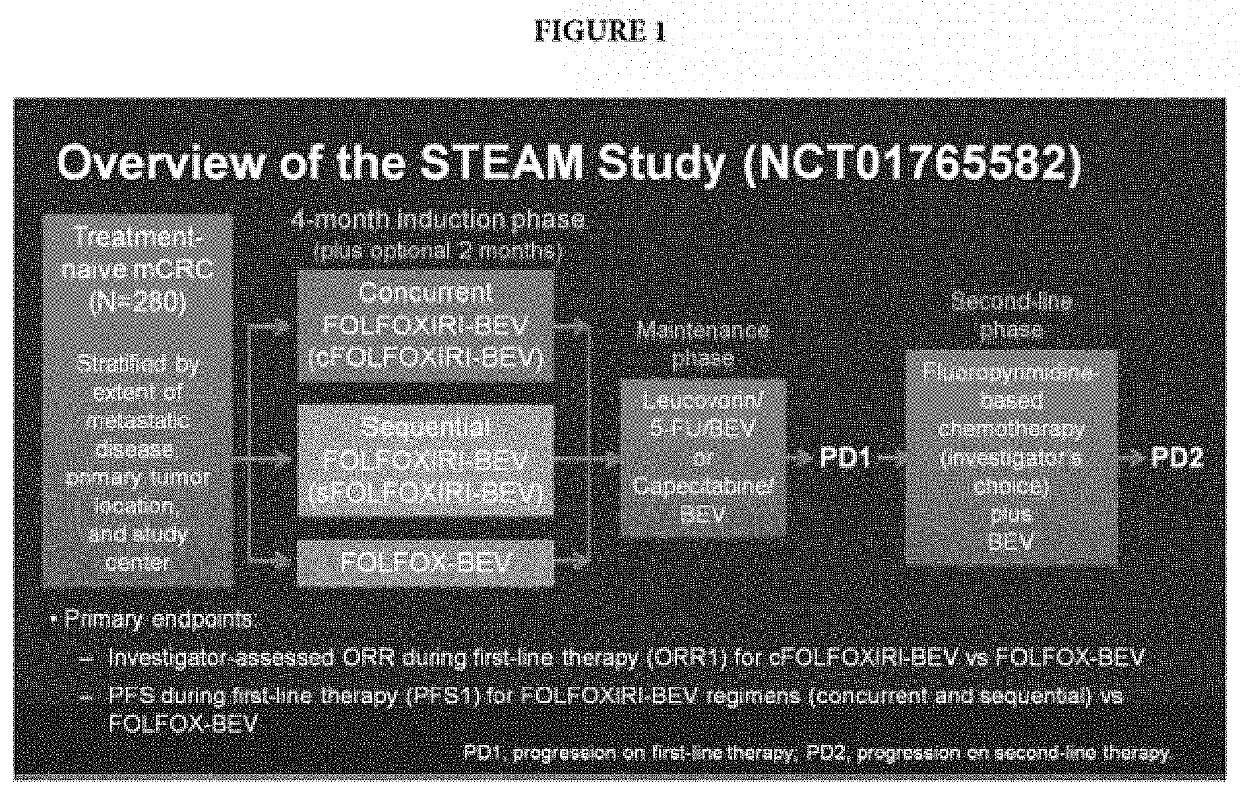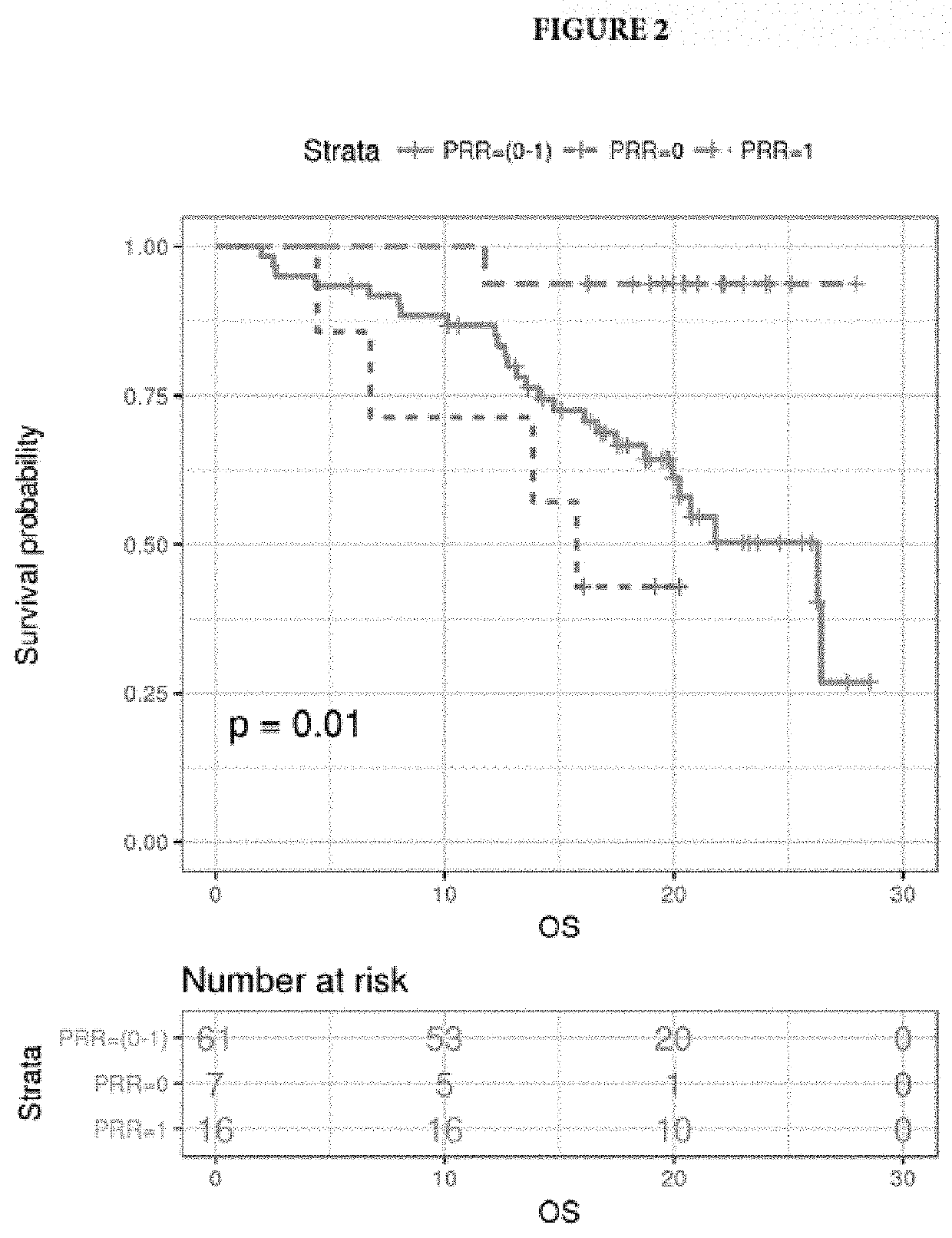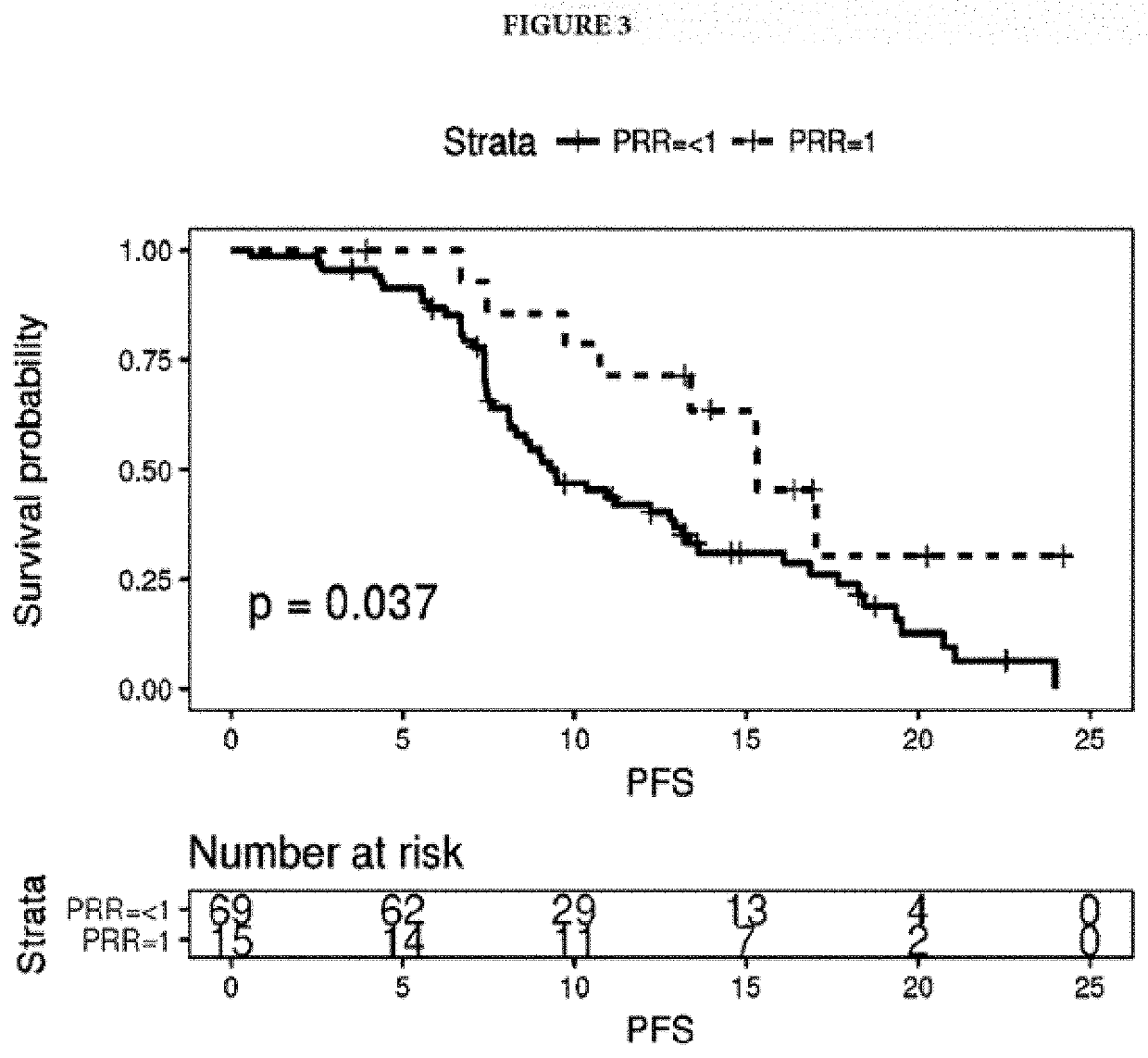Method of predicting response to therapy by assessing tumor genetic heterogeneity
a tumor gene and tumor technology, applied in the field of cancer, can solve problems such as poor prognosis, and achieve the effect of prolonging the therapy duration and increasing the dose of therapy
- Summary
- Abstract
- Description
- Claims
- Application Information
AI Technical Summary
Benefits of technology
Problems solved by technology
Method used
Image
Examples
example 1
l Free Tumor DNA and Solid Tumor DNA of Metastatic Colorectal Cancer (mCRC) Patients to Detect Mutations
[0062]In this example, samples from STEAM clinical trial were used. STEAM (NCT01765582) evaluated the efficacy and safety of concurrent (c) and sequential (s) FOLFOXIRI-bevacizumab (BEV) versus FOLFOX-BEV for first-line treatment of mCRC. The next-generation sequencing based AVENIO® ctDNA Expanded and Surveillance Kits (Roche Sequencing Solutions, Pleasanton, Calif.) were used to identify somatic mutations and mutation burden. The Expanded Kit was used to analyze 77 cancer-related genes by next-generation sequencing (NGS) in tissue, and pre- and post-induction plasma samples (n=182, 150, and 118, respectively). The Surveillance Kit was used to profile somatic mutations in 197 cancer-related genes in pre- and post-induction plasma samples.
example 2
ation Status to Determine Tumor Heterogeneity
[0063]Variants detected by both kits as described in Example 1 were aggregated to calculate tumor heterogeneity. Heterogeneity was measured as tissue-plasma discordance, plasma-based intra-tumor mutant allele fraction dispersion, intergenic variant heterogeneity, and the presence of multiple APC truncating mutations.
[0064]Plasma-based intra-tumor heterogeneity was calculated by measuring plasma-tissue discordance measured as Plasma Recovery Rate (PRR), a ratio of shared plasma and matched tissue variants to total plasma variants. Complete tissue-plasma discordance and concordance were defined as PRR=0 and PRR=1, respectively. A PRR of 0 means that none of the variants observed in plasma was observed in tissue and is a strong indicator of heterogeneity and rapid cancer evolution, i.e. the metastatic clones share no variants with the primary tumor. Patients were grouped by PRR to assess survival (See results on FIGS. 2 and 3).
[0065]Plasma-b...
example 3
or Heterogeneity to Determine Treatment Protocol
[0069]Plasma Recovery Rate (PRR), was measured as described in Example 2. Heterogeneity was defined as PRR=0.8 (high) (See results on FIG. 10). Patients were grouped by PRR and further grouped by therapy regimen: with and without irinotecan to assess survival as PFS and OS (FIG. 11). Based on the results (FIG. 11), irinotecan is indicated for high heterogeneity (PRR high) and not indicated for low heterogeneity (PRR low.)
PUM
| Property | Measurement | Unit |
|---|---|---|
| genetic heterogeneity | aaaaa | aaaaa |
| heterogeneity | aaaaa | aaaaa |
| tumor heterogeneity | aaaaa | aaaaa |
Abstract
Description
Claims
Application Information
 Login to View More
Login to View More - R&D
- Intellectual Property
- Life Sciences
- Materials
- Tech Scout
- Unparalleled Data Quality
- Higher Quality Content
- 60% Fewer Hallucinations
Browse by: Latest US Patents, China's latest patents, Technical Efficacy Thesaurus, Application Domain, Technology Topic, Popular Technical Reports.
© 2025 PatSnap. All rights reserved.Legal|Privacy policy|Modern Slavery Act Transparency Statement|Sitemap|About US| Contact US: help@patsnap.com



